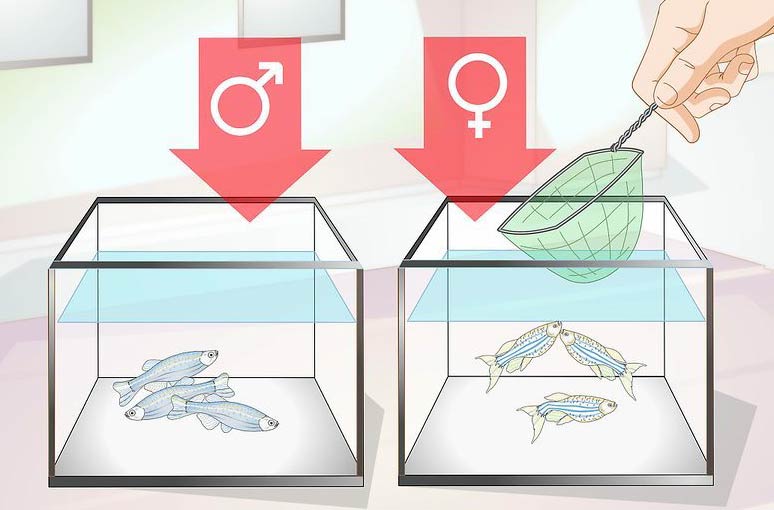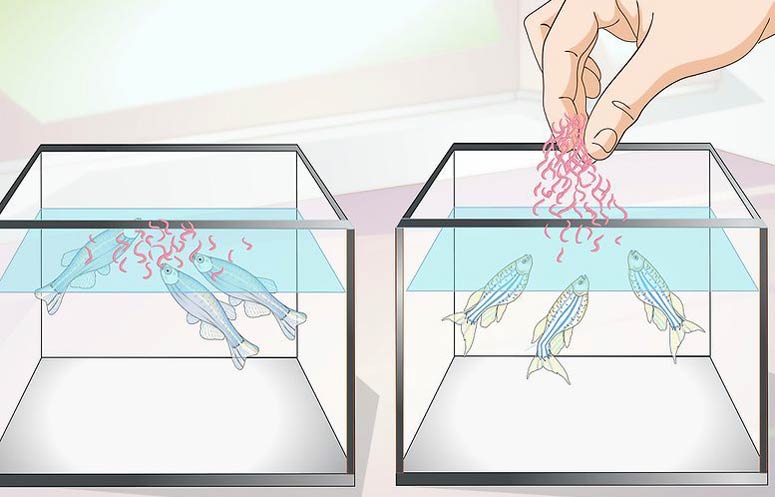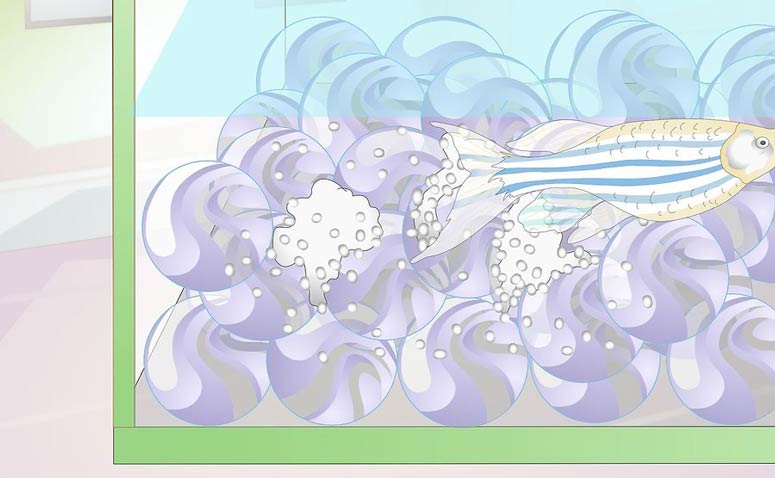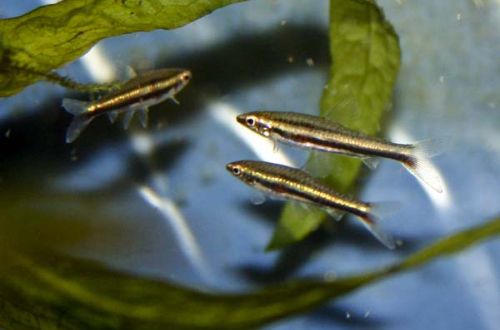
Breeding and reproduction of Danio fish
Danios belong to the group of cyprinids, which are characterized by high fecundity, but at the same time, the lack of parental care for offspring and predation by adult fish in relation to their own offspring. Reproduction occurs simultaneously for the entire group. The eggs are scattered along the bottom without the formation of masonry.
Breeding is quite simple. Probably your fish have already spawned, but the process went unnoticed because the eggs and fry were eaten. In a home aquarium, breeding occurs all year round. For example, experienced breeders hatch fry every 10-12 days.
What will be required:
- three separate tanks, one of them will become a spawning aquarium;
- three heaters, two airlift filters and a light source;
- constant access to live or frozen food;
- spawning substrate (stones, balls, fine mesh, aquatic plants
etc. ).
Contents
Step-by-step instructions for breeding Danio
Step #1: Switch to High-Protein Foods
Diet plays a key role in breeding Danio. Fish have evolved a simple biological mechanism – if there is a lot of food around, then you need to multiply.
Switch your fish to a diet consisting entirely of live or frozen daphnia, bloodworms, mosquito larvae and similar foods. Within a week of such a diet, some of the fish will noticeably round out – these will be females filled with caviar.
How to distinguish a female from a male Danio
Stage number 2. Separation of males and females
Males and females in separate tanks
 Separation of males and females into separate tanks before spawning
Separation of males and females into separate tanks before spawning
When it becomes clear where the females are and where the males are, they are temporarily separated by placing them in two separate tanks filled with water from the main aquarium. The tanks are equipped with a heater and an airlift filter, and a lamp is installed outside. As the latter, it is permissible to use an ordinary table lamp, which will become a light source for two tanks at once. Registration is not required.
Separate detention lasts about a week (7–10 days). All this time, the fish need to continue to feed live food and remember to remove waste so that the water does not deteriorate.
Feeding Danio with bloodworms
 Enhanced feeding of Danio fish with live food (bloodworm) that stimulates spawning
Enhanced feeding of Danio fish with live food (bloodworm) that stimulates spawning
If it is not difficult for you to determine the sex of the fish and you already know where the males are and where the females are, then you can skip step number 1 and immediately separate. In this case, segregation lasts approximately 2 weeks. The diet is the same – high in protein.
It is worth noting that experienced aquarists do not separate fish, but immediately place them in a spawning aquarium (more on that below). However, beginners may miss the right moment of relocation, and Danio will spawn in a common aquarium. In this case, saving the caviar will be problematic. Therefore, the separation option, although more troublesome, allows you to control the reproduction process.
Stage number 3. Preparation of the spawning aquarium
While Danios are in separate tanks, it’s time to prepare a spawning aquarium. It can be almost any tank from a three-liter jar to a basin. A volume of 20-40 liters is enough for a group of a couple of dozen fish.
Preparing the spawning aquarium
 Placing a heater in the spawning aquarium and filling it with warm water
Placing a heater in the spawning aquarium and filling it with warm water
Instead of soil, a layer of round balls (ceramic, glass
The spawning aquarium is partially filled with water from the main aquarium, which is then mixed with fresh soft water with neutral pH values in a ratio of 50% to 50%. The recommended height of the water column is no more than 10 cm. The water temperature should be 2-3 degrees lower than in tanks with fish. The set temperature is maintained by a heater – at this stage, this is the only equipment of the spawning aquarium.
Stage number 4. Spawning (reproduction) Danio
After 7-10 days after separation, the fish reunite again, but already in the spawning aquarium.
Connection of male and female zebrafish
 Male and female zebrafish are placed in a spawning aquarium
Male and female zebrafish are placed in a spawning aquarium
Usually, spawning occurs within 24 hours, the active phase occurs closer to dawn, when the dim morning light begins to penetrate the room. During spawning, males make light pokes on the abdomen of females, which causes them to spawn. If there are not enough males, the females will not be able to get rid of the eggs.
Spawn Danio
 Fish spawn among the spawning substrate (balls)
Fish spawn among the spawning substrate (balls)
In the morning, carefully examine the substrate for the presence of small gray eggs. There are times when the fish fail to give birth on the first day, so they are left in the spawning aquarium for another day. If nothing happened on the second day, the fish are again divided into separate tanks and fed with high-protein food for
Stage number 5. The final stage is the relocation of adult Danio
Danio move to a common aquarium
 Spawned females are transferred with males to a common aquarium.
Spawned females are transferred with males to a common aquarium.
At the end of spawning, the fish are returned back to the general aquarium. Tanks where males and females were previously kept are emptied, the equipment is removed and placed in storage.
Next, it is necessary to ensure the safety of eggs and future offspring, which is described in detail in a separate article.
How to care for Danio caviar and fry





